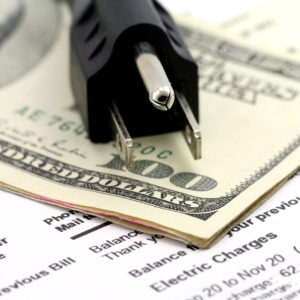It is the centerpiece of President Joe Biden’s energy policy, but government efforts to get to net zero carbon dioxide emissions are implausible, if not impossible. And, an energy think tank warns, it would be particularly harmful to Pennsylvania’s economy.
“President Biden has set an ambitious U.S. goal of achieving a carbon pollution-free power sector by 2035 and net zero emissions economy by no later than 2050,” according to a statement from the White House. But scientists and energy experts say that is an unrealistic goal that would cost taxpayers and utility ratepayers trillions of dollars.
“A massive reordering of how society uses energy will be required” to achieve net zero, according to a new report from the Institute for Energy Research (IER). The author, Kenny Stein, warns the attempt to achieve net zero will result in a massive drop in GDP, more than a million jobs lost, and the average annual household electric bills increasing by $840.
And, the report projects, gasoline prices will have to rise 236 percent.
“It’s just a massive wrenching change, a complete reordering of the entire American energy system,” says Stein. “And we’re talking about doing this, you know, within a decade or two.”
That means producing far more mineral and material resources — such as lithium and cobalt for electric batteries, for example — than today’s conventional energy and vehicle technologies. Most of those minerals are currently controlled by nations unfriendly to the U.S.
China, for example, currently controls 85 percent of the global rare earth processing market.
Natural gas provided 39.8 percent of the nation’s electricity in 2022. According to the Energy Information Administration (EIA), coal is in second place at 19.5 percent. Nuclear kicked in 18.2 percent. So-called renewables were responsible for 21.5 percent of the nation’s electricity, but most of that was wind (10.2 percent) and hydropower (6.2 percent). Just 3.4 percent of the nation’s electricity came from solar in 2022.
Achieving Biden’s net-zero policy means eliminating coal and natural gas from the energy grid. According to the American Petroleum Institute, Pennsylvania produces more natural gas than any other state except Texas, and the industry supplies more than $75 billion in economic, trade, and job benefits.
And the Pennsylvania Public Utility Commission (PUC) reported the state collected $278.9 million in natural gas industry impact fees in 2022, a record amount.
And then there are the technical challenges.
“One of the problems with renewables is that your electric grid tends to become more unreliable, more unstable,” said Stein. “So, in a situation in the winter if you lose electricity — which is not unprecedented in a winter storm — you have no way to heat your home, so you can’t stay in your home, and you become a net zero refugee in that kind of scenario.”
Biden believes it is necessary to help combat man-made climate change, something he has called the “greatest threat” to the United States. Meanwhile, Biden also feels the U.S. must set an example for other nations to follow.
Still, Stier is not sold on the idea, adding we have not had that much change in our energy system over the course of 50 years or more. Therefore, it is hard to believe to think that the U.S. economy will do it in the next 27 years.
“The planning here for having a robust electricity grid that can survive a winter storm that is reliant overwhelming on renewables, because that’s what these net zero plans are, is a recipe for disaster,” said Stein. “If you were talking about having the electricity system rely on nuclear, well, maybe there might be something to make that happen, but those are not the preferred scenarios, certainly not of the Biden administration and environmental activists.”
Please follow DVJournal on social media: Twitter@DVJournal or Facebook.com/DelawareValleyJournal

